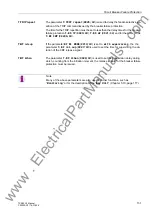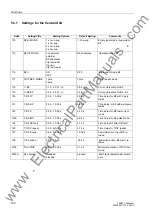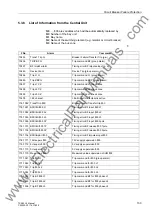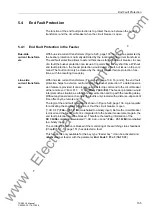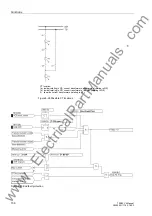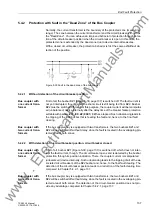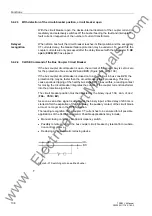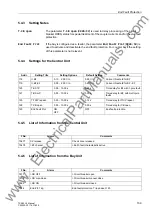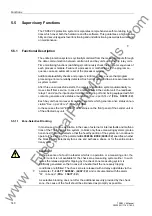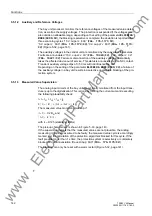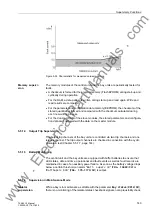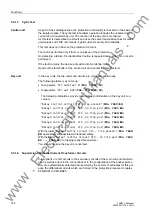
Supervisory Functions
145
7SS52 V4 Manual
C53000-G1176-C182-3
Differential current
supervision
The differential current of each measuring system is individually monitored. Under no-
fault conditions, the differential current of each measuring system is approximately ze-
ro. If no feeders are assigned to a measuring system, the differential current and the
stabilizing current are set to zero. The differential current supervision picks up if the
mean value of the differential current exceeds a certain threshold within an interval set
with the parameter
(
). This threshold can be set individ-
ually for the check zone with the parameter
), and for the
selective protection with the parameter
).
If the differential current falls below the threshold before the set time, the time delay is
restarted if it occurs again.
The differential current supervision can be activated and deactivated with the param-
eter
6306/CU
).
The blocking is reset by operator input ”
” or via binary input ”
BI FNo. 6/CU
) in the central unit.
In case of a pickup of the differential current supervision, the reaction can be set indi-
vidually for the check zone (with the parameter
6311/CU
)) and
for the selective protection (with the parameter
6310/CU
). The
following alarms are generated:
•
Group alarms (selective):
“
Id-sup BZ M
“ (
),
“
Id-sup BZ L1 M
“ (
FNo. 10416/CU
),
“
Id-sup BZ L2 M
“ (
FNo. 10417/CU
),
“
Id-sup BZ L3 M
“ (
FNo. 10418/CU
),
“
Id-sup $03 M
” (
)
•
Group alarms (check zone):
”
Id-sup CZ M
” (
),
•
Single alarms (selective, module ZPS-BSZ2):
”
Id-supL1-2 $03
” (
FNo. 177.1321/CU
),
”
Id-supL2-2 $03
” (
FNo. 177.1322/CU
),
”
Id-supL3-2 $03
” (
FNo. 177.1323/CU)
,
•
Single alarms (selective, module ZPS-BSZ3):
”
Id-supL1-3 $03
” (
FNo. 177.1326/CU
),
”
Id-supL2-3 $03
” (
FNo. 177.1327/CU
),
”
Id-supL3-3 $03
” (
FNo. 177.1328/CU
),
•
Single alarms (check zone):
”
Id-sup CZ L1
” (
),
”
Id-sup CZ L2
” (
),
”
Id-sup CZ L3
” (
),
Linearized current
transformers
Linearized current transformers may have angle errors. The secondary current then
lags behind the primary current. In the event of a short-circuit, the CB interrupts the
primary current near current zero. The secondary current, however, continues to flow
and decays according to an e-function. The angle error and the time constant depend
mainly of the protection burden. The angle error increases and the time constant de-
creases with increasing burden.
www
. ElectricalPartManuals
. com

